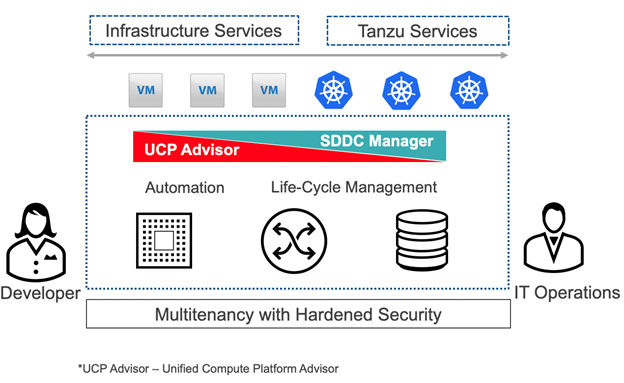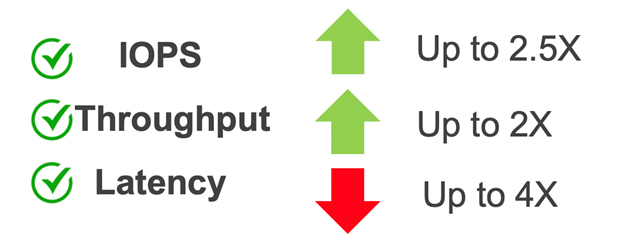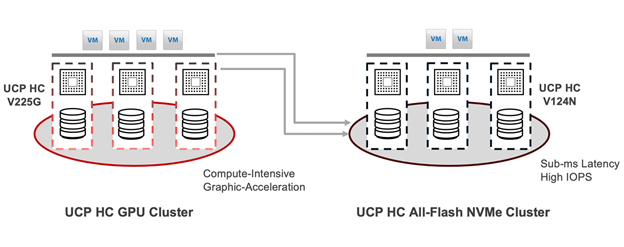Modernizing Your Cloud Platform for IT Agility and Efficiency


Businesses are increasingly embracing a cloud-first approach to increase market responsiveness and flexibility. The cloud-first approach refers to a cloud-like experience consisting of on-demand metered consumption of IT infrastructure, whether on the public cloud or inside private data centers.
The rapidly evolving consensus among the tech leaders and vendors has led to an emergence of hybrid IT. With the flexibility to deploy applications on premises or in a public cloud, hybrid IT can move them around to the location that meets security requirements and best delivers performance, availability or costs. Leading IT analysts estimate a significant amount of technology investments will be associated with hybrid-cloud capabilities.
Traditionally, application development teams and IT operations teams have attained excellence in silos, which tend to reduce launch speed and add complexity. The new hybrid-IT model needs to bring these two teams closer for enhanced collaboration that leads to a seamless production workflow and improved business competitiveness. Our new rack-scale Hitachi Unified Compute Platform RS (UCP RS), working with VMware Cloud Foundation with native VMware Tanzu Kubernetes Grid services, helps modernize applications. The new hybrid-cloud model delivers a unified infrastructure platform for deploying and managing traditional virtual machines (VM) and containers to reduce the infrastructure overlay and management complexity. This model delivers operational consistency across private data centers and public clouds for easier workload mobility and higher efficiency.
Also, as I wrote in my blog The Challenge of Increasing Cloud Agility While Maintaining Your Existing Systems, new systems of innovation must also coexist with the existing systems of record, delivering core business applications with scale-up requirements.

The UCP RS integrated software-defined data center (SDDC) solution, built on hyperconverged Hitachi Unified Compute Platform HC (UCP HC) systems, gets a massive power boost with third-generation Intel Xeon Scalable processors and Intel Optane DC NVMe SSD to enhance the performance of latency-critical applications. This high-performance solution improves resource utilization with increased workload density without causing noisy-neighbor issues.

In addition to supporting vVOL-enabled, externally connected and independently scalable Hitachi Virtual Storage Platform (VSP) storage, the solution introduces support for VMware vSAN HCI Mesh to deliver adaptable nodes for a flexible hybrid cloud. With the HCI Mesh architecture, customers can improve asset utilization and save on license costs by simply tapping into unused vSAN capacity from another vSAN cluster.
The new architecture allows overutilized UCP clusters to remotely access vSAN datastores from underutilized UCP HC clusters hosted under the same VMware vCenter. New disaggregated storage design will be useful in large and small hyperconverged infrastructure environments alike. Both methods of scaling compute and storage resources independently have their clear and distinct use cases and both can play a major part in your IT modernization journey!

Updated hyperconverged infrastructure introduces support for Nvidia A100 to harness the power of AI to uncover insights and accelerate business outcomes. UCP RS allows customers to run modern AI and data science workloads and manage them through a single platform. The Nvidia A100 vGPU allows deep learning training to seamlessly scale out to multiple HCI nodes with almost a native performance.
Please read this article to learn how Hitachi and VMware join hands to provide a flexible hybrid cloud to Services Australia federal agency for increased speed, flexibility and simplicity.
Commenting on Hitachi’s UCP RS, Eric Sheppard from premier IT analyst, IDC, said: “UCP RS provides a modern SDDC environment by leveraging enterprise-class storage and compute from Hitachi Vantara with VMware’s full suite of software-defined infrastructure and management software called VMware Cloud Foundation. The core software-defines infrastructure building within VMware Cloud Foundation includes compute (vSphere), storage (vSAN) and networking (NSX). These foundational SDDC infrastructure building blocks of UCP RS become a highly automated cloud stack through the integration of VMware’s vRealize software with automated life-cycle management provided by VMware’s SDDC Manager and Hitachi UCP Advisor.”
To learn more, please visit www.hitachivantara.com/cloudfoundation or contact your Hitachi or partner representative.
Colin Gallagher is Vice President, Product Marketing at Hitachi Vantara.

Colin leads product marketing for storage systems and software, and converged/hyper-converged solutions. He has 25-years’ storage marketing and product management and has a passion for telling stories about technical products that help customers solve business challenges.